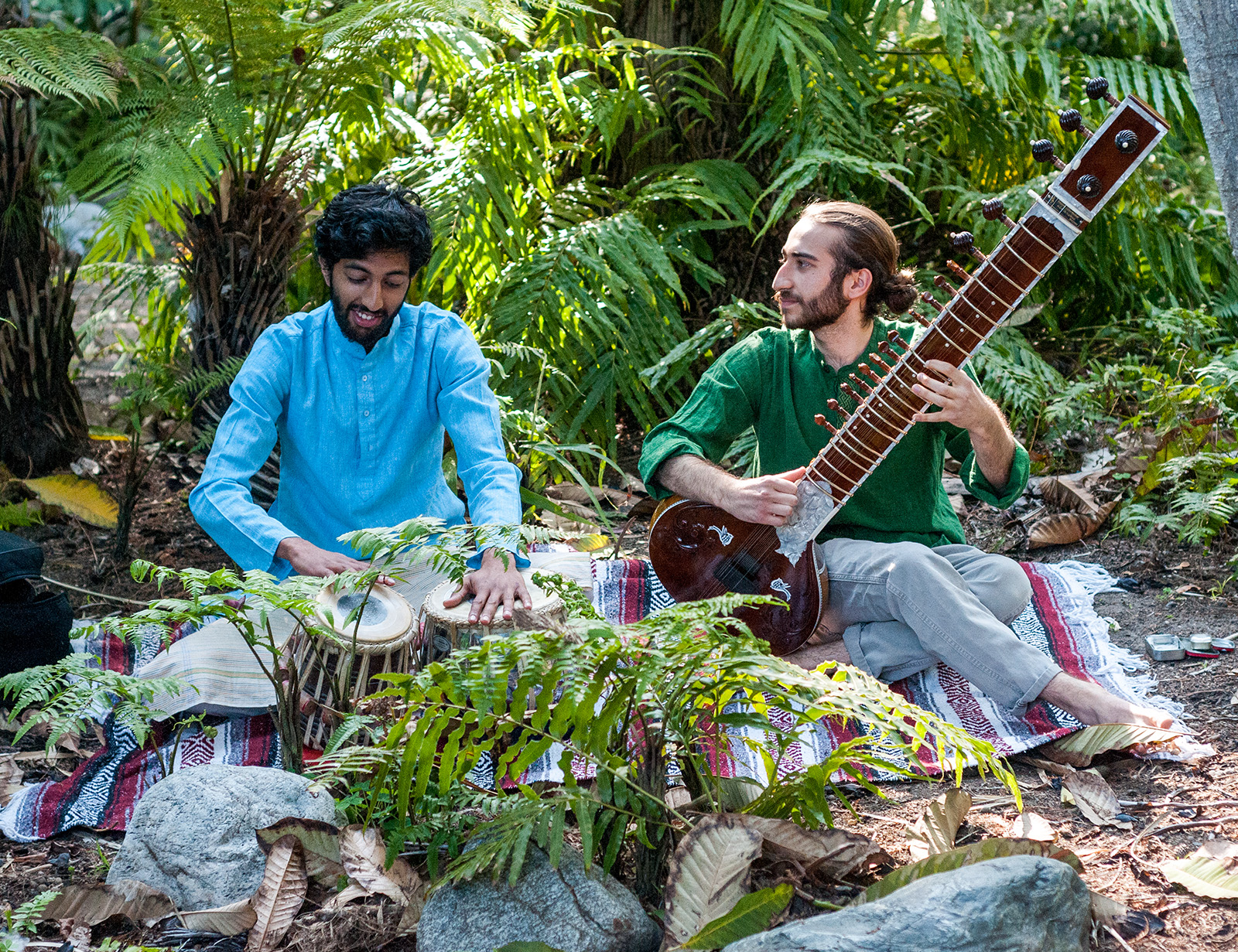Students cultivate Hindustani tradition via outdoor, botanical performance

Ram Kaundinya, a third-year cognitive science student will play the tabla alongside Justin Inbar, a fourth-year ethnomusicology student who will play the sitar, at Saturday’s “Ethnomusicology in the Garden” event. The performance will take place in the The Nest amphitheater in the UCLA Mildred E. Mathias Botanical Gardens. (Farida Saleh/Daily Bruin)
Ethnomusicology in the Garden: Hindustani Classical Music
UCLA Mildred E. Mathias Botanical Garden
May 12
Free with RSVP
By Eli Countryman
May 9, 2018 10:40 p.m.
This post was updated May 10 at 12:26 p.m.
Ram Kaundinya and Justin Inbar will play Hindustani classical music in its traditional outdoor location at their upcoming event, “Ethnomusicology in the Garden: Hindustani Classical Music.”
Together, Inbar and Kaundinya will perform traditional Northern Indian music at The Nest amphitheater in the UCLA Mildred E. Mathias Botanical Gardens on Saturday. Kaundinya, a third-year cognitive science student, will play the tabla, a rhythmic instrument, alongside Inbar, a fourth-year ethnomusicology student, who will play a string instrument called the sitar. Kaundinya said performing the music outdoors in the garden will mimic the historical traditions of Northern Indian classical music, which is connected to the natural world.
“There are no walls (in the botanical garden), so people don’t feel closed off,” Kaundinya said. “It’s great to have music on a platform or pedestal, but it’s also great to incorporate it into life.”
Inbar said each type of raag – a type of melodic style played in a signature scale – is linked to either a time of day or a season. Inbar and Kaundinya will perform the raags “Charukeshi” and “Yaman,” which Inbar said are traditionally performed during the evening hours.
Inbar and Kaundinya said they chose “Charukeshi” and “Yaman” because the former features a more serious tone, with minor notes, while the latter is upbeat and has a spring-time feel. Although they evoke different emotions, they both represent the evening time in traditional Northern Indian culture because of the time of day they were historically played in the court setting.
“In Indian classical aesthetics, like dance, there’s a well-thought-out tradition of tying moods to specific aesthetics,” he said. “With this music, it’s tied to nature.”
Kaundinya said performing the tabla outdoors reminds him of how his own teacher learned to play the instrument by sitting under a tree with another master. Traditionally, Hindustani classical musicians learned to play music in the open areas surrounding an ashram, a type of Indian monastery, he said.
“It’s tied to how the music was taught, how it came about and how it was presented,” Kaundinya said.
Rahul Neuman, a lecturer of the North Indian sitar in UCLA’s department of ethnomusicology, said performing with a sitar and tabla in an open environment can present various pros and cons. The location provides a sense of comfort and therefore aids in the improvisation of notes, he said. The location also affects the audience’s experience because they can take in the natural elements of the environment.
But despite its benefits, Neuman said it is often difficult to project the sounds of a sitar in outdoor locations because the audience may not be able to hear transitions between notes, which can easily be lost in the open surroundings. Although performers often add a microphone to pick up sound better, Neuman said it can be still be difficult for the audience to hear more distinct acoustics.
“There’s a lot of subtle nuanced notes and different movements on the sitar,” he said. “You need it to be quiet and have good acoustics to hear the nuance.”
Inbar said performing outdoors has helped him disconnect from the Western style of concert hall performances while giving the audience a newfound respect for the musical form. Playing in nature should encourage people to actively listen to the music and capture its connection to different times of day, achieving catharsis by the end of the show, he said.
“It’s not music that just passes over you and you passively listen to,” Inbar said. “I think it demands attention and focus, but I think it’s very rewarding and meditative.”


